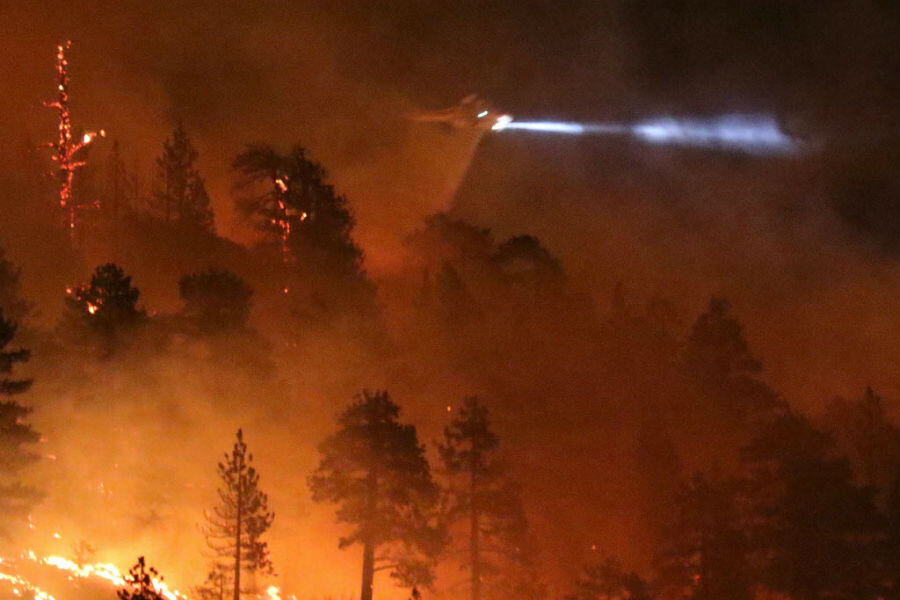Are Sierra Nevada wildfires getting worse now with climate change?
Loading...
Wildfires in California are burning at increasingly higher elevations, according to a new study, with scientists saying the phenomenon is another signal of approaching climate change that could also have implications for how forests are restored after fires.
The study, which analyzed 105 years of data, found that forest fires in the Sierra Nevada mountains rarely burned above the 8,000-foot elevation early in the 20th century. Fuel for fires were typically dryer and more abundant at lower elevations, but over the past three decades several fires each year have burned at or above the 8,000-foot elevation.
Mark Schwartz – lead author of the study and also director of the John Muir Institute of the Environment at the University of California, Davis – described the increase of higher-elevation forest fires as “yet another harbinger of climate change” in a statement released with the study.
Tree density may be increasing at higher elevations as temperatures warm with climate change, he noted in the statement. With increased tree density comes an increased likelihood of forest fires, especially considering that California is in the midst of a four-year drought, added Professor Schwartz.
“Low snowpack in the mountains and related forest stress are further increasing the chances of large, destructive fires that move high into the Sierra,” said Schwarz, who is also a professor of environmental science and policy at UC Davis.
Firefighters have responded to some 1,200 forest fires since Jan. 1 this year, including one in the Sierra Nevada foothills that sprang up over the weekend. About 1,100 firefighters have responded to the blaze – which threatens up to 200 homes in a drought-stricken region about 45 miles northeast of Sacramento – but as of Sunday night only 15 percent of the 2-square-mile fire was contained.
Firefighters in the state are also battling a 10-square-mile blaze near Napa Valley wine country, which was 65 percent contained on Sunday.
Another significant outcome of the higher-elevation fires could be a change in overall forest composition, the study found. Forest fires are the primary driver of forest change in the Sierra Nevada, and more scorched forest at higher elevations could accelerate shifts in vegetation, allowing lower-elevation plants and trees to migrate uphill.
In turn, Schwarz said, that could effect how forest managers restore a forest after a fire, including whether or not to seed locations that have burned and which species to seed as part of forest restoration.
“The findings will likely not impact the way high-elevation forest fires are managed, because safeguarding human life and protecting property will continue to dominate how forest fires are managed,” he added. “We suspect, however, that the study results may influence how forest managers respond in restoring a forest after a fire.”
This report contains material from the Associated Press.








